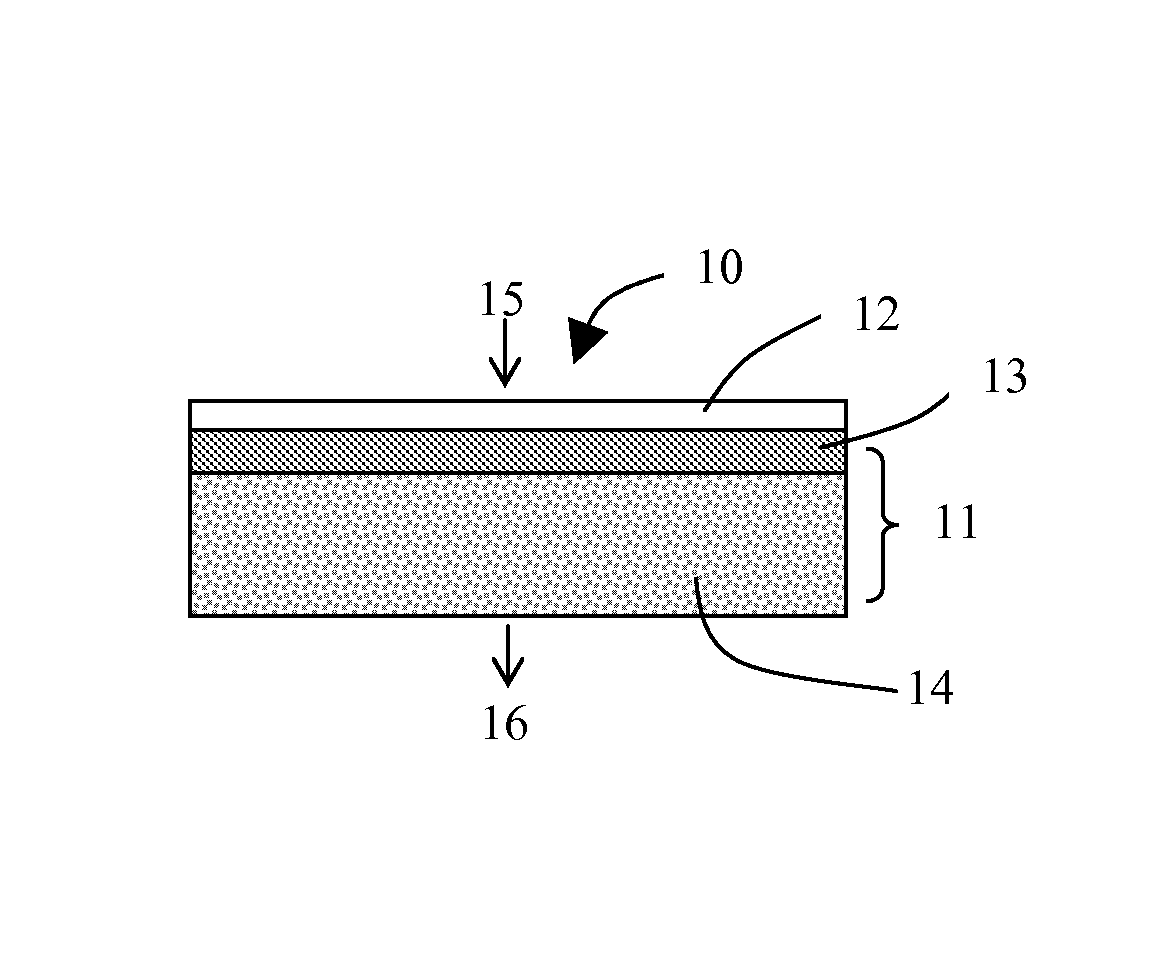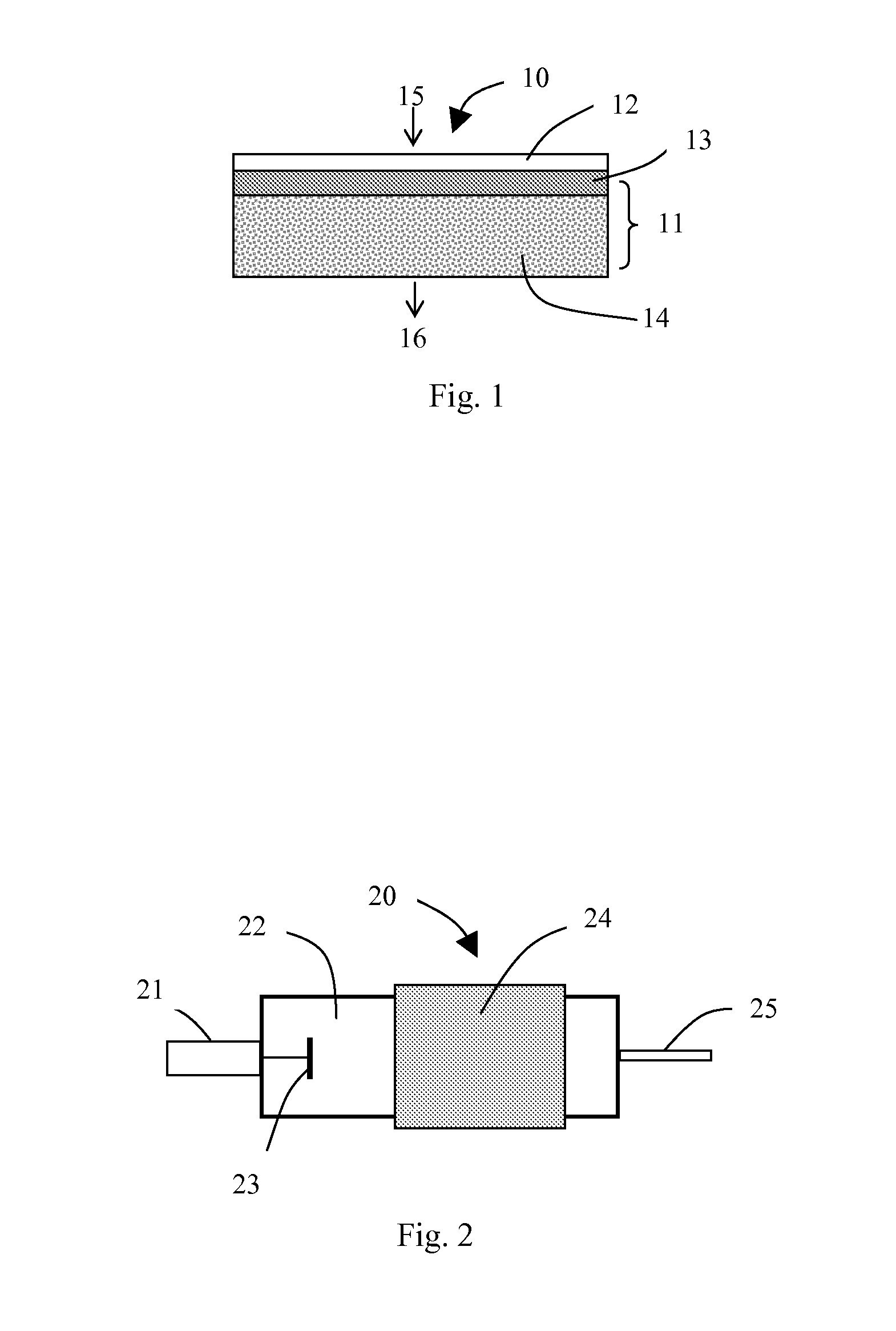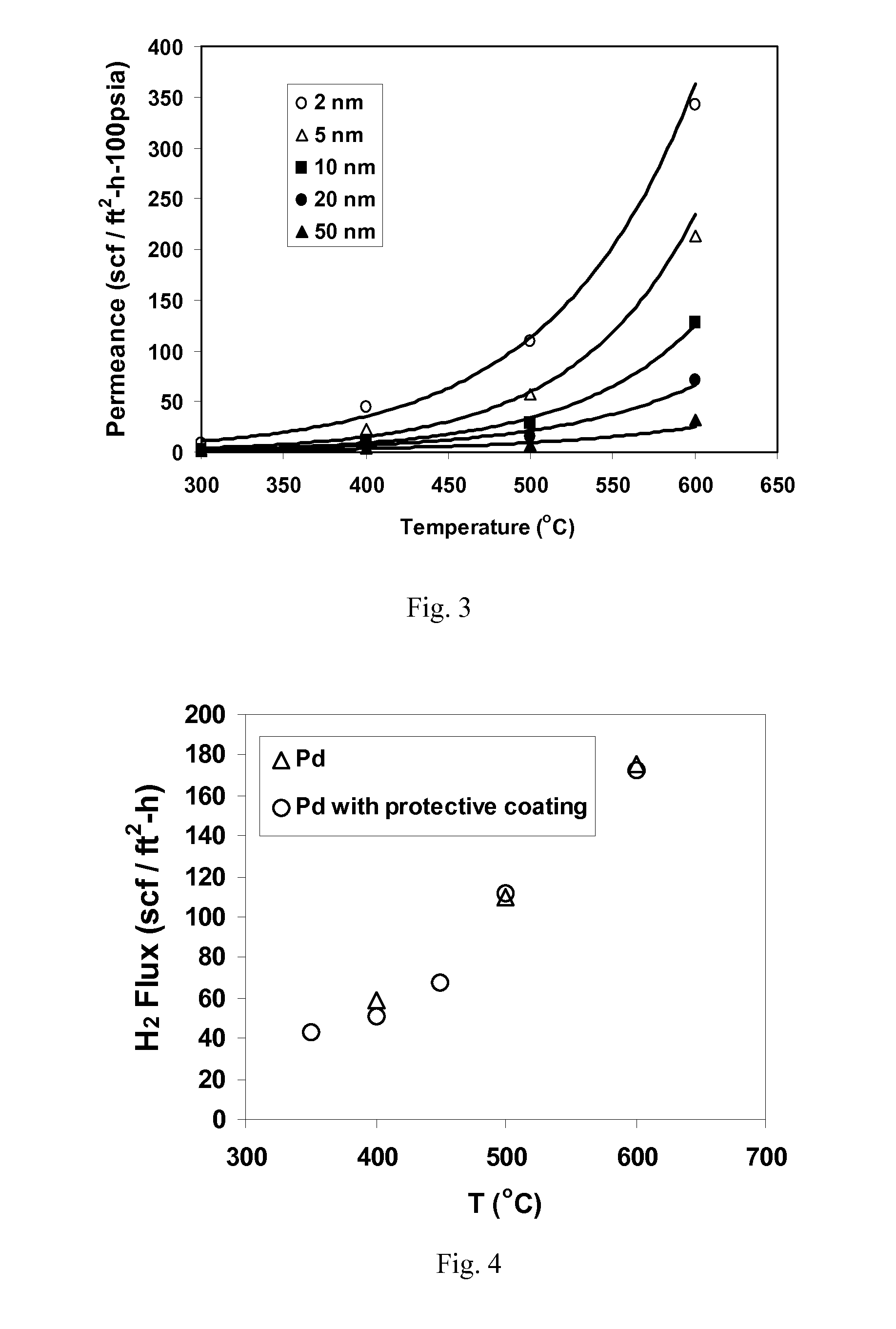Hydrogen selective protective coating, coated article and method
a protective coating and hydrogen selective technology, applied in the direction of coatings, separation processes, dispersed particle separation, etc., can solve the problems of not being able to selectively allow hydrogen to pass through, metals are prone to being attacked by highly corrosive gases, and 2/sub>s is one of the most problematic metals and metal alloys, etc., to achieve high hydrogen permeability
- Summary
- Abstract
- Description
- Claims
- Application Information
AI Technical Summary
Benefits of technology
Problems solved by technology
Method used
Image
Examples
Embodiment Construction
[0040]The following detailed description is to be read with reference to the drawings, in which like elements in different drawings have like reference numbers. The drawings, which are not necessarily to scale, depict selected embodiments and are not intended to limit the scope of the invention. Skilled artisans will recognize that the given examples have many alternatives that fall within the scope of the invention.
[0041]Referring to FIG. 1, a coated article according to an embodiment of the invention is shown. In FIG. 1, hydrogen selective coated article 10 includes a hydrogen permeable substrate 11 and a coating 12. (Coating 12 may also be referred to herein as hydrogen selective metal oxide layer 12 or hydrogen selective protective layer 12.) Substrate 11 as shown comprises a metal layer 13 and a porous support 14. (Metal layer 13 may also be referred to herein as hydrogen permeable layer 13.) In some other embodiments of the invention, substrate 11 will not include a support 14...
PUM
| Property | Measurement | Unit |
|---|---|---|
| thickness | aaaaa | aaaaa |
| hydrogen permeation activation energy | aaaaa | aaaaa |
| hydrogen permeation activation energy | aaaaa | aaaaa |
Abstract
Description
Claims
Application Information
 Login to View More
Login to View More - R&D
- Intellectual Property
- Life Sciences
- Materials
- Tech Scout
- Unparalleled Data Quality
- Higher Quality Content
- 60% Fewer Hallucinations
Browse by: Latest US Patents, China's latest patents, Technical Efficacy Thesaurus, Application Domain, Technology Topic, Popular Technical Reports.
© 2025 PatSnap. All rights reserved.Legal|Privacy policy|Modern Slavery Act Transparency Statement|Sitemap|About US| Contact US: help@patsnap.com



